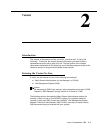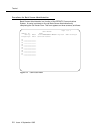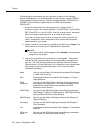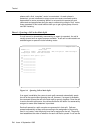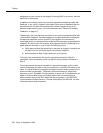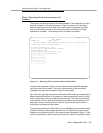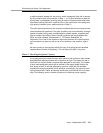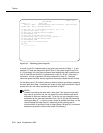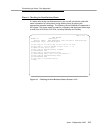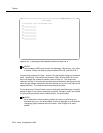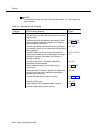
Constructing a Vector: One Approach
Issue 4 September 1995
2-9
Phase 3: Repeating Delay Announcement and
Feedback
The vector in the previous section provides feedback to the caller after the call is
queued. However, if the announcement in Step 3 is played, and if the agent
does not answer the call soon after the announcement is complete, the caller
may end up holding the line for too long a time without receiving any further
feedback or treatment. The following vector provides one solution:
Figure 2-6. Repeating Delay Announcement and Feedback
The
wait-time
command in Step 4 of this vector provides additional feedback
(this time, music) to the caller. If the call is not answered by the time Step 4
completes, the
goto step
command in Step 5 is processed.
Up to this point, we have discussed and illustrated Call Vectoring commands that
cause
sequential flow
(that is, the passing of vector processing control from the
current vector step to the next sequential vector step). The
goto step
command
is an example of a Call Vectoring command that causes
branching
(that is, the
passing of vector processing control from the current vector step to either a
preceding or succeeding vector step).
The
goto step
command in Step 5 allows you to establish an announcement-wait
loop that continues until the agent answers the call. Specifically, the command
makes an unconditional branch to the
announcement
command in Step 3. If the
call is not answered by the time the announcement in Step 3 is complete, control
Page 1 of 1
CALL VECTOR
Number: 27 Name: base
Basic?y EAS?n G3V4 Enhanced?n ANI/II-Digits?n ASAI Routing?n
Prompting?n LAI?n G3V4 Adv Route?n
01 queue-to main split 5 pri l
02 wait-time 10 seconds hearing ringback
03 announcement 2771
04 wait-time 60 seconds hearing music
05 goto step 3 if unconditionally
06 _______________
07 _______________
08 _______________
09 _______________
10 _______________
11 _______________



